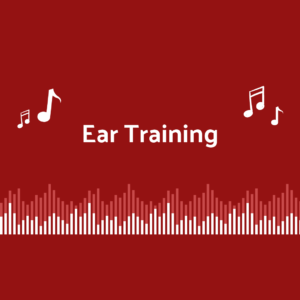If you are a musician of any kind, chances are you have come across the term “ear training.” Maybe you already do some type of ear training, perhaps you have attempted ear training and stopped, or possibly you have never tried any kind of ear training.
Whether you sing, play an instrument, produce music, or anything else music related, ear training has an important place. There are helpful benefits to ear training that can improve your abilities in any type of musical setting.
Ear training develops your listening abilities through identifying intervals, scales, chords, rhythms, and other musical elements. These aspects help you better understand what is happening in the music and improve your musicality. This article will help explain why ear training is important and how it can help you as a musician.
What are the benefits of ear training?
In the early stages of ear training, it is important to remember that ear training really involves listening activities meant to help you with other musical tasks. The better you get with ear training, the more you can apply to other areas such as singing in tune, playing an instrument, improvising, composing music, or other similar goals.
Spending time ear training can help you learn music faster, develop a wider range of musical styles, compose more unique music, help you play by ear, among other benefits. Ear training can help you improvise with more confidence and play with others more efficiently since you will have more practice listening and identifying certain sounds.
Additionally, you will have an easier time hearing what other musicians are playing and will be able to better understand what is happening in the music. Ear training can also help you learn how to play new instruments faster, as you will have a deeper understanding of how the instrument works overall.
How does ear training help you learn a new instrument?
Certain instruments have certain tuning or fingering systems, and spending time ear training will help you more quickly pick up how the instruments are organized.
For example, guitars mostly use perfect fourths when played in standard tuning (with the exception of the B and G strings being a major third). Bass also typically tunes using perfect fourths.
Mandolins, violins, violas, and cellos on the other hand are tuned in perfect fifths. Understanding these types of intervals will give you a better understanding of the instrument from the very beginning. During my undergraduate degree, I took a cello class and my teacher was surprised when he heard me playing a harmonic minor scale. I was able to apply my knowledge from guitar intervals and use it on a new instrument.
If you play piano, this knowledge also carries over to mallet percussion instruments such as marimba, xylophone, and glockenspiel. Sometimes, band directors will recruit students who know piano to play mallet percussion instruments in the band. Having prior ear training experience helps you more quickly identify patterns and systems in place on the new instruments.
How does ear training help you play with others?
Ear training prepares you for playing in a group setting as it helps you see a bigger picture of what is happening in the music.
There have been times when I need to play with a group on limited rehearsal before a performance. Sometimes, there is not detailed sheet music available, or there may just be a lead sheet. Ear training helps you get ready for these types of situations by knowing what could come your way, and helping you quickly identify aspects of the music by ear.
If a group runs through a song, and you can hear the melody, chord progression, harmonic rhythm, or other aspects quickly, you will be able to join and participate faster. This means more time making music and less time figuring out other aspects.
How does ear training help singers?
If you are a singer, ear training greatly improves your ability to sing in tune, and improves how well you blend with other musicians.
If you are singing a melody and someone else is singing or playing a harmony, having an understanding of what is happening improves performance. Ear training gives your ear practice identifying certain sounds in advance and putting sounds into categories. Filing sounds into categories is better for your memory and you will be able to recall sounds when you hear them in context.
Even if you are not primarily a singer, ear training can help you develop your voice and understand pitch more accurately. Many music teachers say, “If you can sing it, you can play it.” This means that hearing a note first is the most important step, even for instrumentalists.
Singing or playing a melody with an accompaniment
Ear training helps you if you are singing or playing a melody along with an accompaniment. You will have a more heightened awareness of the harmonic structure and how your voice part or instrument melody fits into the chord.
Many people do not realize the same note may need to be tuned differently depending on what part of the chord it is. For example, if you are singing or playing the third of the chord, it will need to be slightly flat compared to if you were singing or playing the root orh FF fifth of the chord.
Polyphonic instruments such as guitar and piano have the benefit of playing both melody and harmony at the same time, but do not have as much flexibility with adjusting pitch while performing live. Singers, wind players, orchestral strings, and other similar instruments are more capable of making minute adjustments quickly while playing to blend correctly.
Singing or playing a melody without an accompaniment
Singing without an accompaniment is called “a capella” and can be much more difficult for many singers. Having a background in ear training helps you stay centered and gives you a better understanding of intervals as you sing.
Playing an instrument without a group or accompaniment can also be challenging as you do not have a reference if you are going out of tune, unless you are playing while looking at a tuner (not practical at all during live performance).
How does ear training help with music production?
If you are a music producer and have experience mixing or mastering music tracks, ear training can help you refine your tracks and speed up your workflow.
Mixing and mastering involves an understanding of the frequency spectrum; the human ear can hear from around 20 hertz up to 20,000 hertz. If you spend time with ear training exercises, you will have a more detailed listening ability helping you zone in on certain frequencies.
Especially if you are working on a mix with a lot of tracks, you will need to work efficiently and be able to pick up on problem frequencies before applying subtractive EQ. You will also have a better understanding of where to boost if needed to help add clarity to your mix. Ear training can help you know where these frequencies are ahead of time and have a clearer idea in your head of where to go next.
Early Ear Training Experience
One of my own early experiences with ear training came from playing different types of scales on one string of the guitar. For example, I would play a major scale (Ionian mode) on the high E string. I had to pay attention to when I had to move two frets, which would be a major second (whole step), or one fret which would be a minor second (half step). Playing a scale in this way on guitar is more similar to how you would play a scale on piano.
Doing this exercise while listening to the sound of each note being played helped me get more comfortable with whole steps and half steps early on, and I was better able to identify the sounds when I heard them in music.
After playing the major scale ascending and descending, I would change the whole step and half step pattern for different types of scales. The natural minor (Aeolian) scale shown below lowers the third, sixth, and seventh scale degrees. I would do the same thing and play through each mode (Ionian, Dorian, Phrygian, Lydian, Mixolydian, Aeolian, Locrian). I would alter the frets to change the whole step and half step pattern to match each mode.
Once again, this helped me identify these types of sounds when I heard them used in songs. I could also practice listening to the different types of scales being played from another source (ear training apps, etc.) and have a more tangible connection to what I was hearing. Ear training without applying skills to a certain context does not hold much relevance.
If you play piano, an instrument with multiple strings, or have the ability to add a drone (continuing to sustain the same note) you can add to this exercise by playing the same notes above against a second note(low E string works well for the example shown above). This lets you hear harmonic intervals, or two notes at the same time, giving you a better sense of how different scales sound in the context of a song.
Summary
In general, ear training can be very helpful, but it is not a standalone skill. It really should always have a purpose and an application, otherwise it does not really mean much.
In general, ear training helps you develop a listening library of certain sounds, helping you better understand the language of music. Hopefully you found benefits to ear training that help you on your musical journey!


